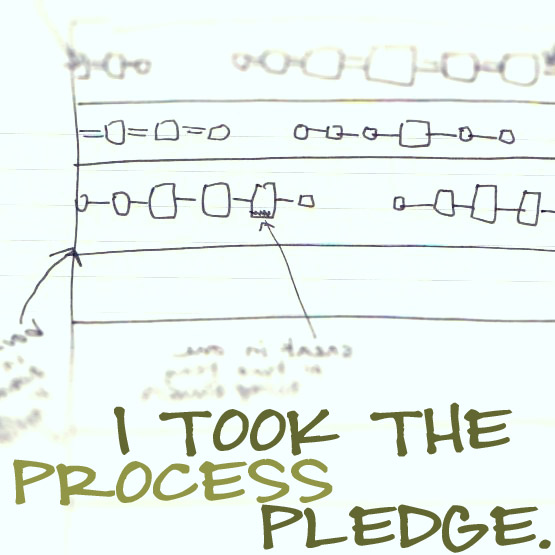Before
After
So I bought this great little chair at a local thrift shop - it was handmade, heavy-duty woodwork and I even liked the sweet little floral detailing at the top of the chair. However, even though someone had gone through all the trouble to create this charming little rocking chair, they did a terrible job staining the wood - there were thick blobs of stain in various spots and lots of ugly irregularities in color - plus, the floral detailing was off center, and that bugged me. Because I already have a hard-core sanding job still unfinished (sigh), I decided to paint over this mess for any easier fix. It worked well for this project: none of the staining blobs show through the new layer of paint, which could have happened in the absence of sanding.
I decided to include a simple tutorial in sewing your own custom made cushion with piping. The piping adds a slight challenge to the sewing, but if you're well prepared with pins and a proper foot for machine sewing, it'll be a cinch!
What you will need:
firm foam in desired thickness - I used 1.5"
sharp scissors or rotary cutter
ruler/measuring tape
fabric and thread
ready-made piping in appropriate yardage
pins
zipper-foot or piping foot for your sewing machine
First, measure your chair. I wanted a tight fit so I used exact measurements because there is no where to attach strings to keep the cushion on the chair, so it needed to fit snugly. Next, outline your cushion measurements on the foam and cut it out.

Get out your fabric, rotary cutter, and ruler. Take your measurements from the chair seat and add an extra one-inch to what you'll need to cut from your fabric. For example, my seat measurements were 11" x 12" - so I cut two squares at 12" x 13" - because I planned to use a .5" seam allowance. Next, cut four pieces for the sides of the pillow, adding an extra inch as before. The sides of my cushion were 1.5" thick and the lengths were 11" and 12" to match the top and bottom of the cushion. So I cut two strips at 2.5" x 12", and one more strip at 2.5" x 13". The fourth strip will need to have a wider width to accomodate a zipper. For this cut two more strips of fabric and insert your zipper, ensuring that the final measurement of this particular strip is just like your longest side strip you previous cut.
I neglected to photograph zipper insertion on one of the side strips. There are many good online tutorials for zipper insertion, such as this
one.
Next, sew the four side pieces together, end to end. You may be wondering why I didn't just cut one long strip to fit - but I wanted straight up-and-down corners that wouldn't round out at all, which may happen with one strip.
Now pin all your piping in place, with the piping that will show on the cushion facing inward.
Then pin in place the side strip, being careful at the corners - use plenty of pins to ensure nice flat seams and square corners. Make sure your zipper is left open so that you can easily turn the cushion cover right-side out when you finish sewing. Double check that your cushion cover fits snugly over the top of the cushion before sewing on the rest of the fabric - make adjustments as necessary. Once this is done, do the same for the bottom of the pillow.
And you're done! Piping really does add such a professional touch to upholstery and I think it's well worth the added effort!
As for the fabric choice, I was lucky to have travelled to Sweden last year and I picked up some gorgeous home decor weight fabric in this cute fox and berry pattern. For transforming old furniture with spray paint, Design*Sponge has a good tutorial
here. For stenciling ideas, I was inspired by
Lotta Jansdotter - her simple Scandinavian aesthetic is just my cup of tea.
I hope this tutorial is helpful to you!




















